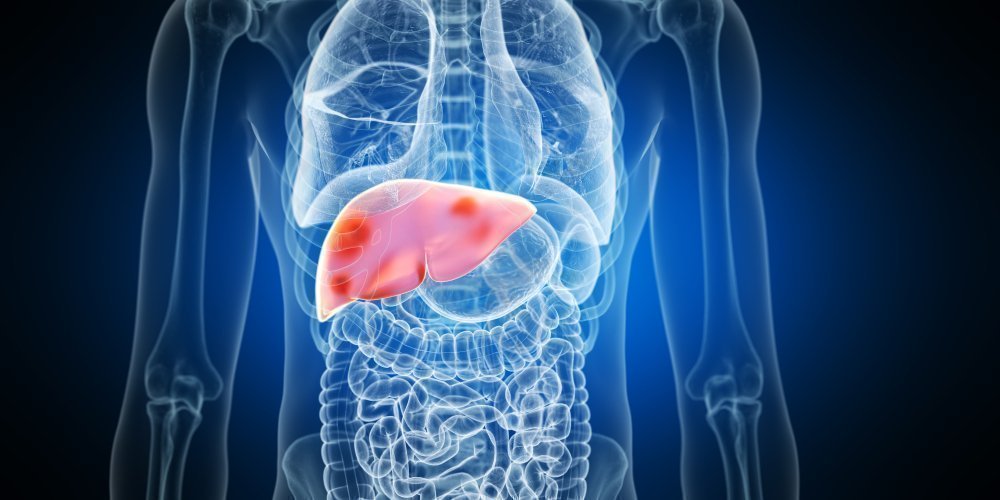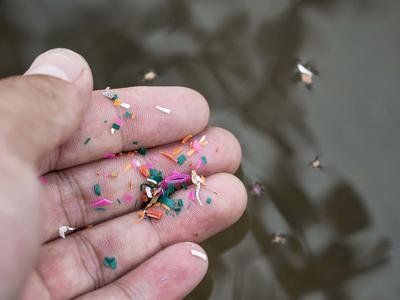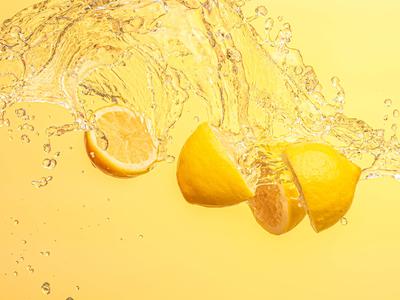Liver Detox
Cleansing the Body’s Toxin Control Centre
The liver is the body’s largest internal organ and among its 500 different functions, it is responsible for detoxifying and neutralising toxins.
It is the liver that converts toxins into waste products. It cleanses the blood, breaks down nutrients and medications and produces proteins. And while a healthy liver naturally cleanses itself, it occasionally needs a little help, especially if it's constantly bombarded with toxins.
Whether it’s environmental pollution, household chemicals or preservatives in food, our bodies are under the kind of stress never seen before, all of which can deplete nutrient stores, causing a build-up of dangerous substances, such as heavy metals or mould, that lead to chronic inflammation.
“The liver is basically our main detoxification organ,” explains Tina Christoudias-Spyrou, Neomed’s Functional Medicine Practitioner and Nutritionist. “It has a lot of other functions, but this is its main priority to get the chemicals and all the stuff that our body doesn't need to work, out of the body. And it does this by dumping toxins into a substance called bile.
“This bile then goes into our poop and we poop it out. This is why it's so important to have a good digestive tract because of all the toxins that are dumped out by the liver, we excrete. So, if we're not excreting, it's a problem because all those toxins get recycled and we put more burden on our livers.”
How the Liver Detoxifies - Phase 1 and Phase 2 Pathways
There are two major detoxification pathways inside liver cells, commonly known as Phase 1 and Phase 2.
The Phase I liver detoxification pathway uses multiple enzymes to break down harmful substances into smaller parts. The efficiency of these important enzymes depends on your genetics, lifestyle, levels of toxicity, and nutritional deficiencies that you may have.
Phase 1 is favourably activated by:
- vegetables, such as broccoli, cabbage, brussels sprouts, cauliflower, beets, artichokes, celery, carrots, as well as dark green leafy vegetables;
- herbs such as milk thistle, dill, caraway, fennel;
- high-quality protein;
- nutrients, such as Vitamin C, A, E, B-group, magnesium, calcium, copper, iron, selenium and zinc;
- antioxidants, such as glutathione and flavonoids.
If the by-products of Phase I detoxification build up and stay in the liver, they can cause great damage to the body’s DNA and proteins – and this is where Phase 2 kicks in.
The Phase 2 pathway makes toxins water-soluble so that they can be excreted from the body. Also known as conjugation, Phase 2 uses six different pathways to take toxins out of the body via bile, urine and stools.
To work, Phase 2 needs:
- sulphur, which can be derived from cruciferous vegetables, garlic, onions, meat and egg yolks;
- amino acids glutamine, taurine, cysteine, methionine, and glycine;
- molybdenum, a trace mineral found in leafy vegetables and liver;
- B-group vitamins;
- and glutathione, which is found in asparagus, avocado, spinach, broccoli and supplements.
Other nutrients and foods that help Phase 2 are flavonoids, a group of natural substances found in fruits, vegetables and a variety of herbs. Ellagic acid, a natural phenol antioxidant, is also a great help and can be found via red grape skin, garlic, rosemary, soy and cabbage.
Signs That Your Liver Needs a Detox
Given the enormous job of cleaning the body of toxins, it’s little surprise that symptoms of a liver struggling to keep up with demand are wide and varied. However, the most common signs of a tired liver ready for a cleanse include:
- Brain fog
- Lethargy
- Constipation
- Sugar cravings
- Seasonal allergies
- Skin issues including itchiness
- Joint pain
- Extreme body odour
- Stress or anxiety
- Weight problems
- Mood swings
- And bad breath.
Why Do Livers Sometimes Struggle?
While compromised or damaged livers can be the result of diseases like hepatitis, nutrition plays a huge part in liver function. You are what you eat and the better you eat, the better your body and the ability of its organs to do their job. Other factors that can affect the liver’s ability to function include:
- Exposure to chemicals such as pesticides, fungicides, high pollution levels and paint
- Obesity – pesticides and plastics are stored in fat tissue, and excess fat can also cause non-alcoholic fatty liver disease, which impedes the liver function
- Alcohol
- Excessive sugar – studies show that sugar can be as damaging to the liver as alcohol
- Overmedicating
- And a leaky gut, which can lead to the release of pro-inflammatory toxins into the bloodstream that tax the liver.
How You Can Help Your Liver
One of the easiest ways you can help your liver is to adopt a balanced, healthy diet and drink at least eight glasses of filtered water daily. There are also certain foods that your liver will love.
“Eat a lot of green, leafy vegetables,” advises Tina. “Rucola or spinach or kale, anything that is dark and leafy, are very good for the liver. Cruciferous vegetables are also very important such as broccoli cauliflower and Brussel sprouts. All these foods help to promote the detoxification pathways of the liver. Although not to everyone’s taste, rosehip and dandelion tea are also very effective and can be easily added to smoothies.”
Other liver-friendly foods include almonds; artichokes; berries; beets; citrus fruits; fermented foods such as sauerkraut, kimchi, pickles and yoghurt; lentils; and salmon for their omega-3 qualities.
As well as eating well, clay and castor oil packs are also a great way to help sluggish livers.
Successfully used for many years to treat skin infections and constipation, castor oil supports the body’s lymphatic drainage system. It increases the production of lymphocytes that play a key role in immune function and it can prevent the growth of bacteria, yeasts and moulds in the body.
“Castor oil penetrates the skin very easily when placed over the liver area,” explains Tina. “It's a highly absorbable oil that goes straight into the liver to either stimulate or regenerate or kill parasites. It's a fantastic way to liver cleanse. It's very easy and it costs practically nothing so it’s definitely something you can do at home.”
Mud or clay wraps are another great help. As well as an incredible way to look and feel great, they also rehydrate and detoxify the skin, eliminate toxins, increase immunity levels and boost the lymphatic system.
Another way to assist the liver is to ensure the body gets the nutrients it needs such as magnesium, B vitamins and zinc. While supplements – including milk thistle which has great antioxidant and anti-inflammatory properties – are a way to correct nutrient deficiencies, Neomed also offers a comprehensive package of therapies designed to assist the liver’s natural detoxification pathways as well as Liver Boost IV therapy which ensures your body gets all the help it needs, quickly and efficiently.
Intermittent fasting is also said to aid liver function with studies suggesting that during periods of fasting, cells in the liver produce more of a protein associated with improved sugar metabolism and reduced levels of liver fat.
Of course, the bottom line is that a liver cleanse often involves a significant lifestyle change and this can be gruelling at first. That’s why it is advisable to seek expert advice before planning any form of detox.
For more information about Liver Detox Programme, please fill in the form below:







